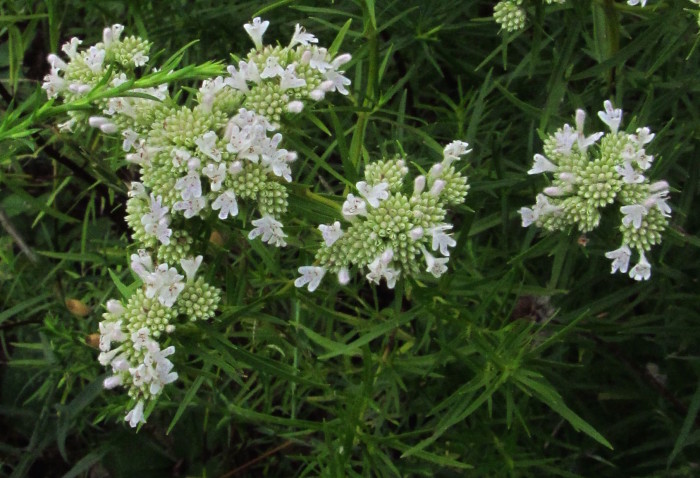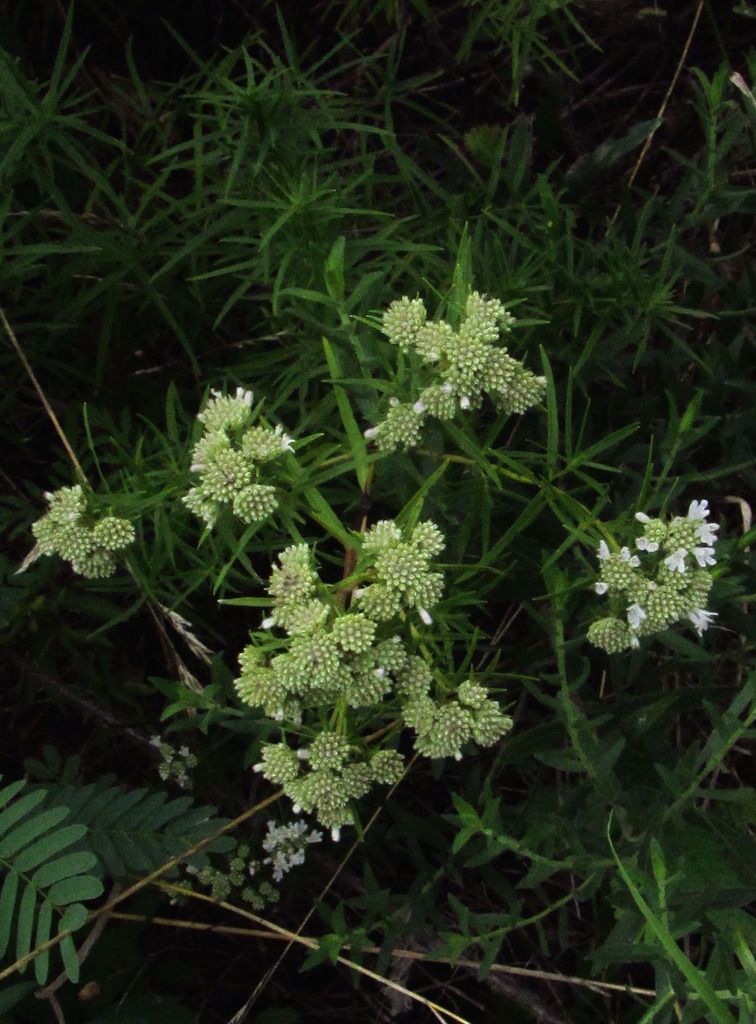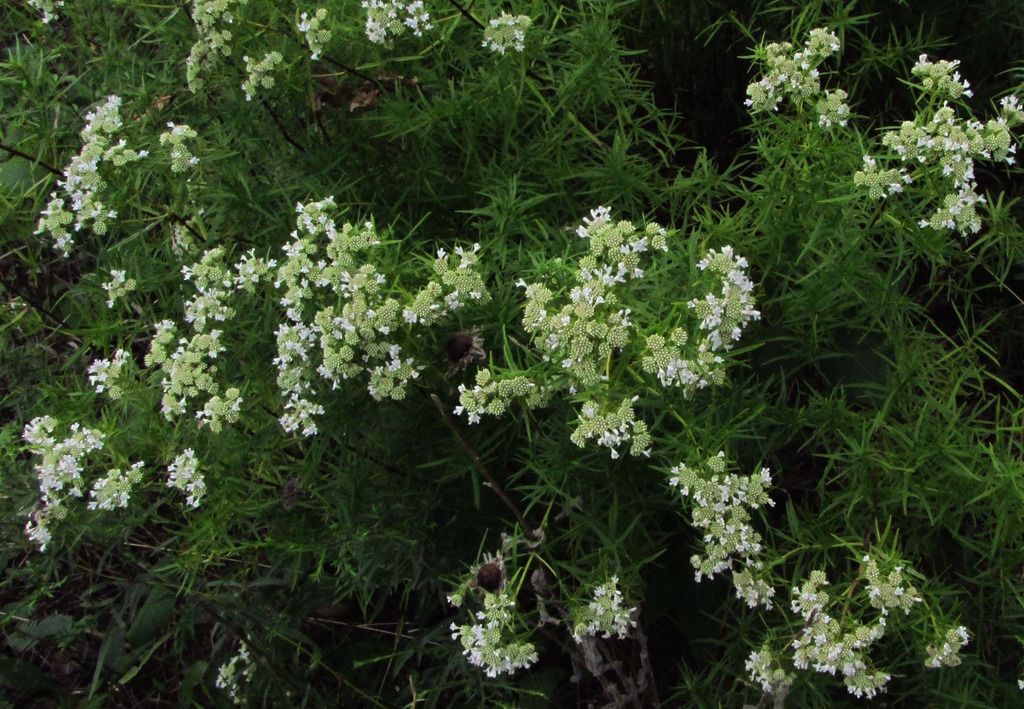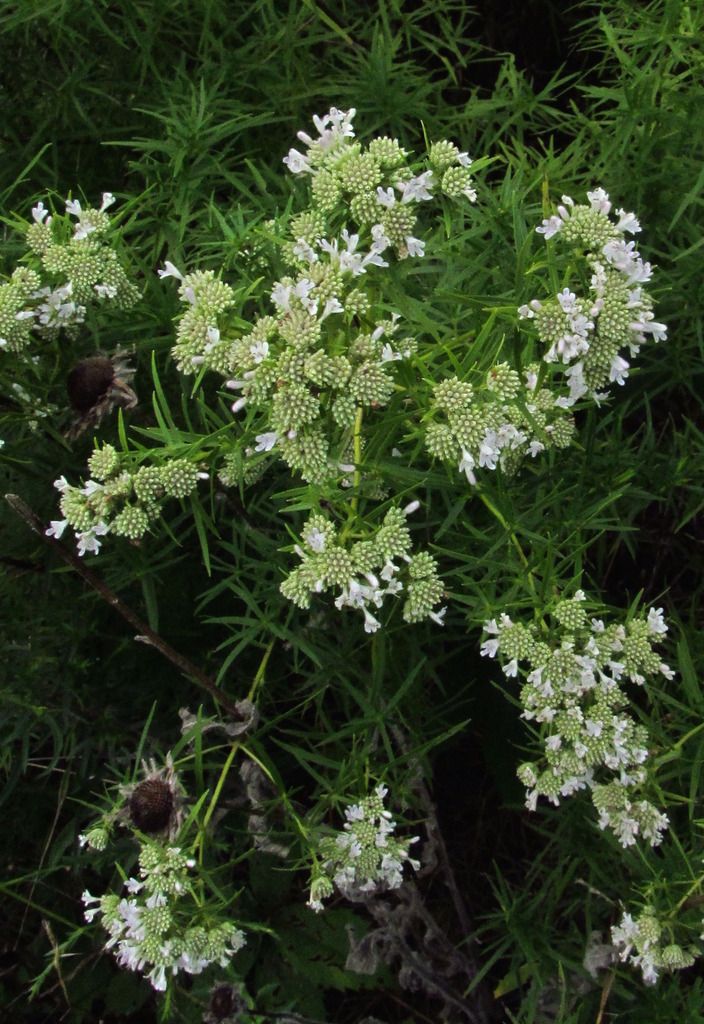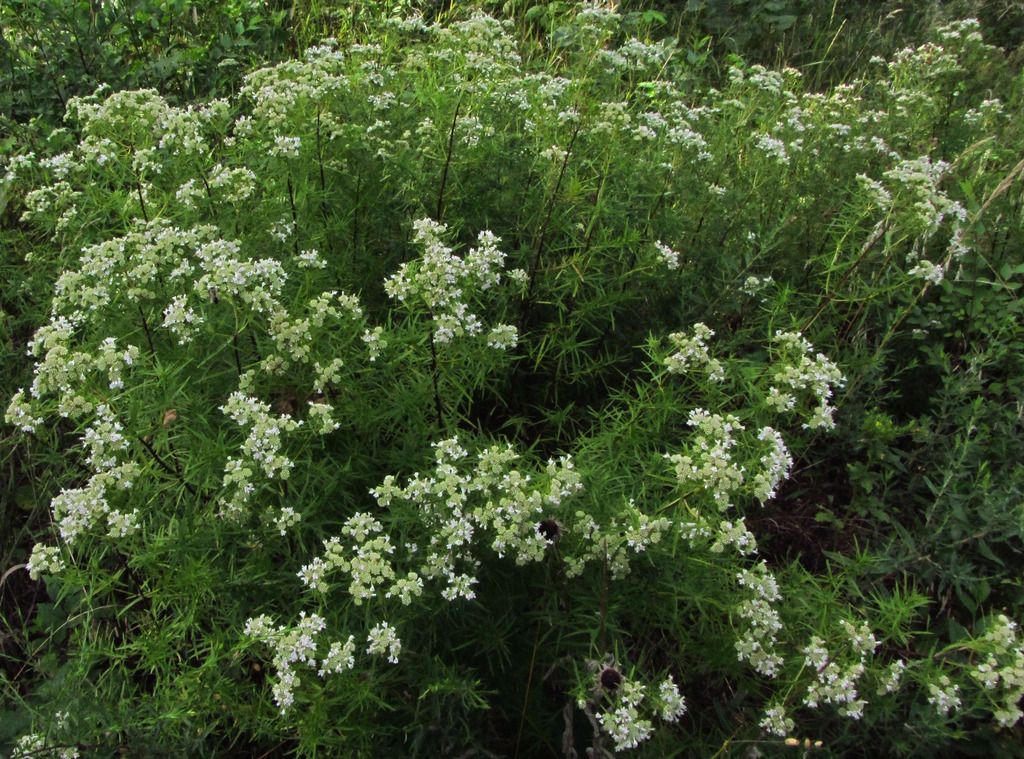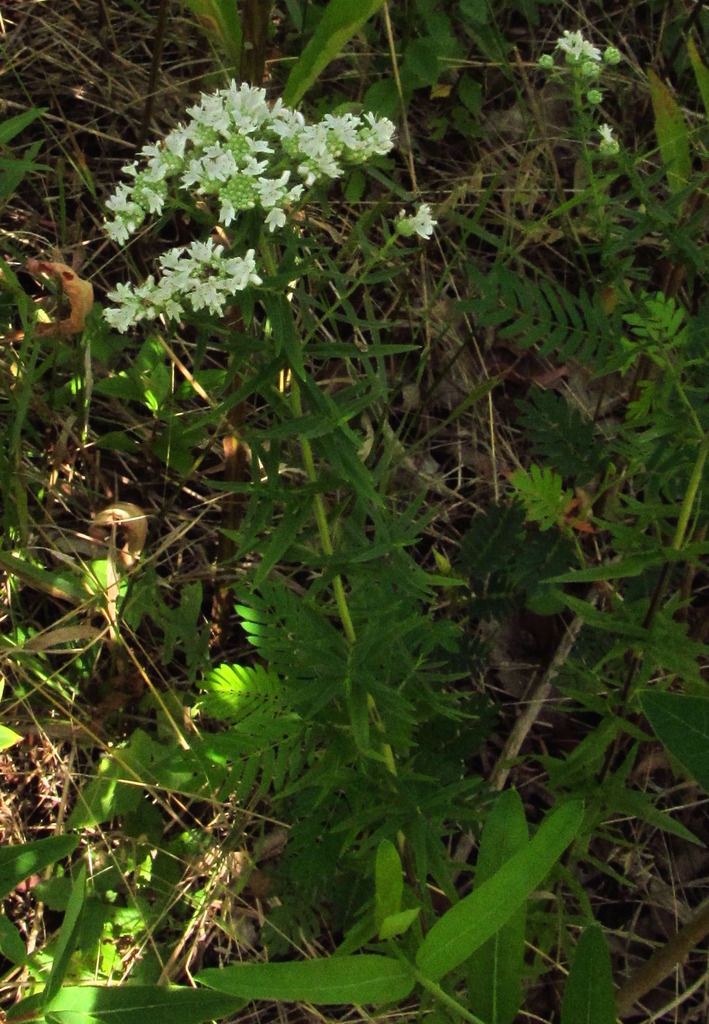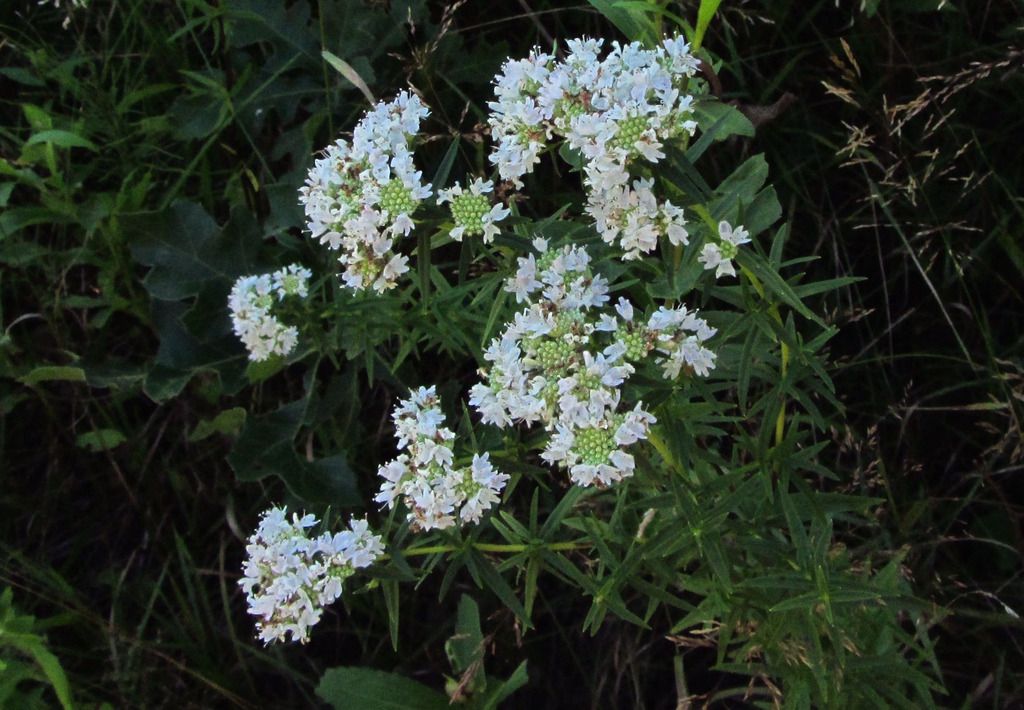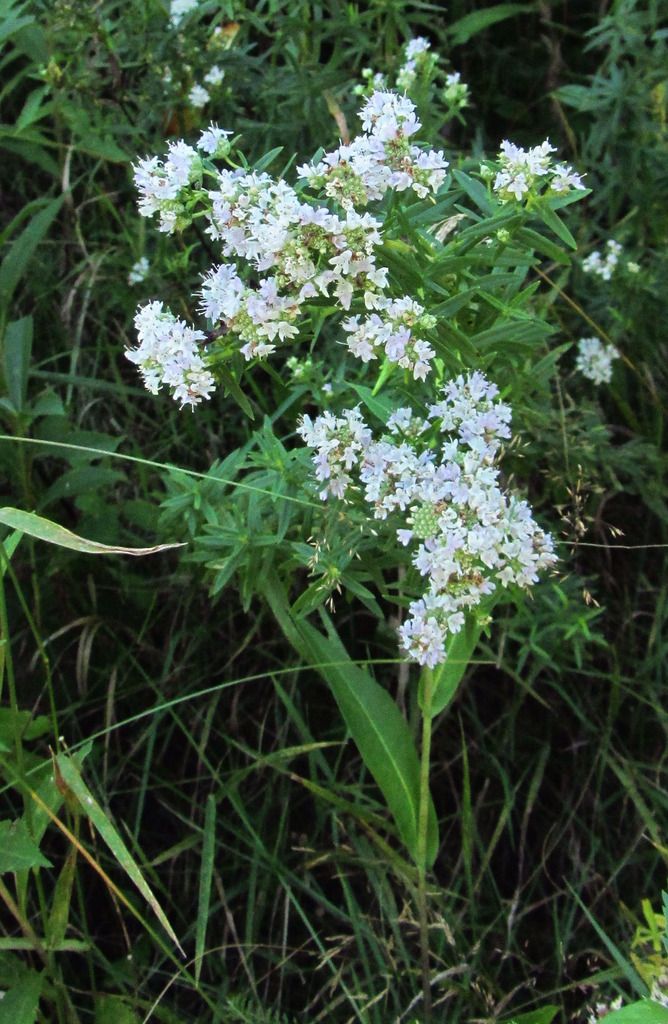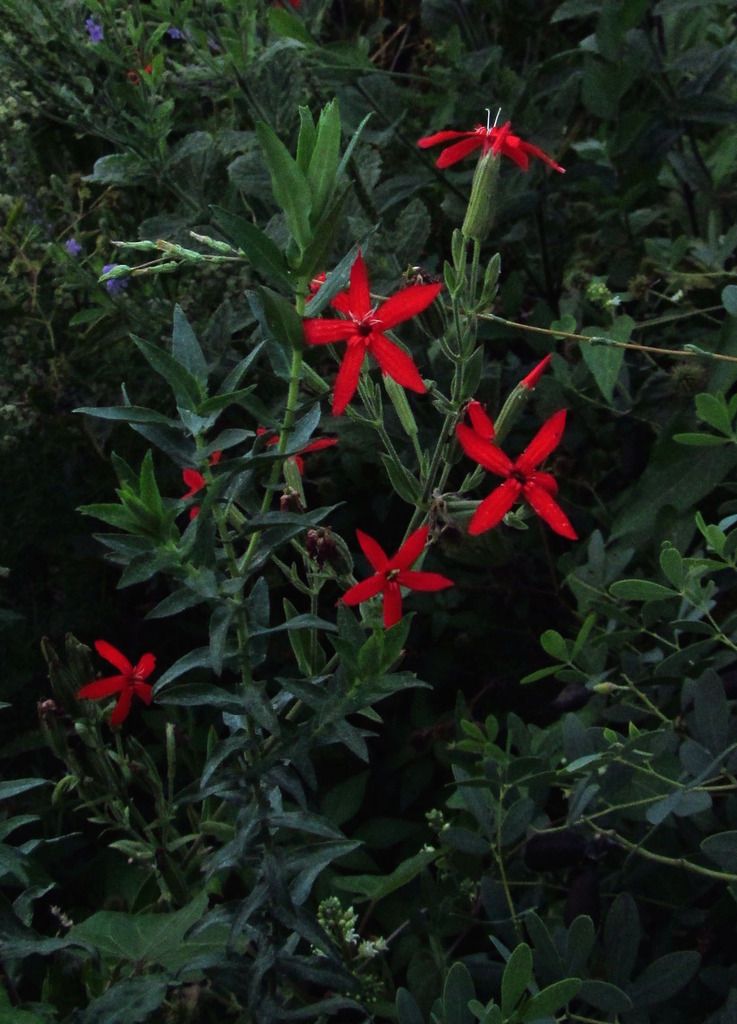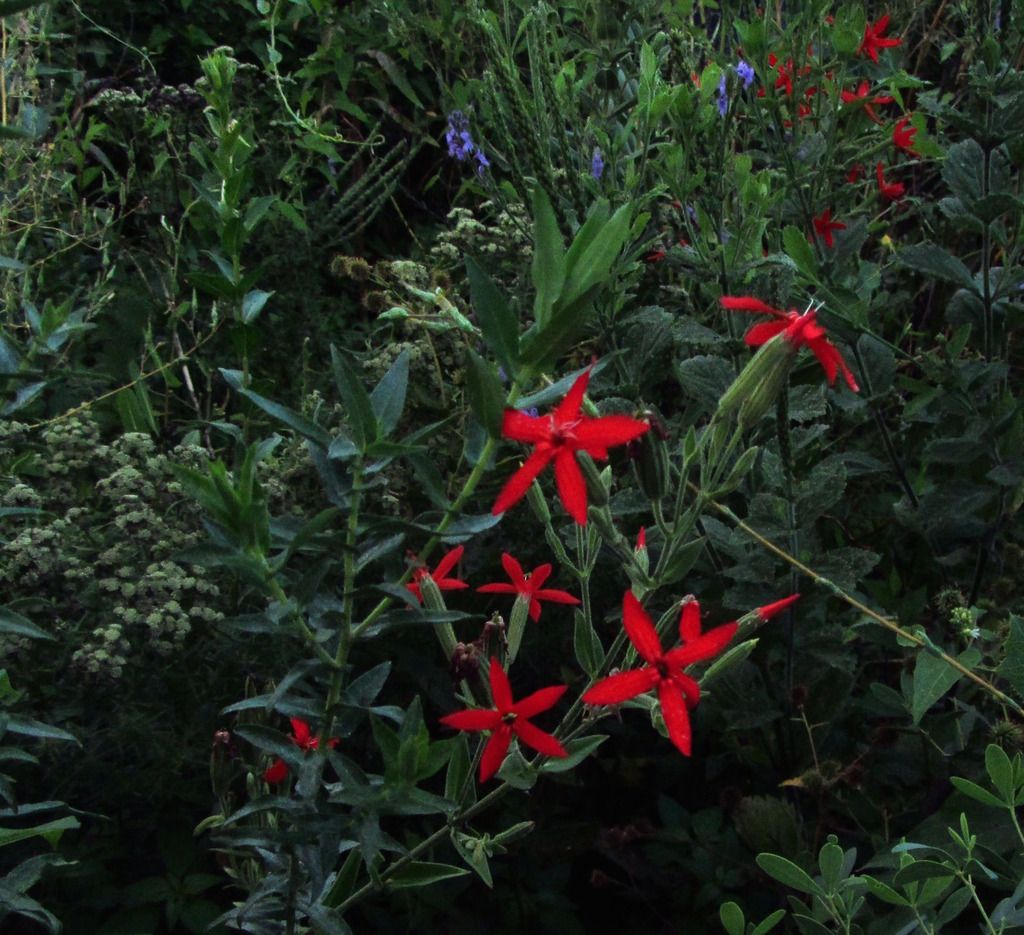The tiny white flowers on today’s featured plant aren’t the most impressive-looking blossoms you’ll find in late summer, but they are in a family of “deer-resistant pollinator magnets.”
Virginia mountain mint (Pycnanthemum virginianum) is native to most of North America east of the Rocky Mountains. Also known as common mountain mint, these plants thrive in a range of moist habitats and are “not fussy about soil texture.” A wide range of insects pollinate the flowers, but mammals tend to avoid the fragrant foliage. The strong mint smell is unmistakable when you crush a few leaves. I took these pictures a few weeks ago at Whiterock Conservancy near Coon Rapids and next to the Meredith bike trail in Des Moines, close to the southeast parking lot at Gray’s Lake.
Scroll to the end of this post for two bonus shots of a much more “showy” wildflower. I was sad to learn that the native range of Royal catchfly (Silene regia) does not extend to Iowa. However, this plant with bright red flowers can be cultivated here and reportedly attracts hummingbirds. I found these growing in one of the plantings at a Gray’s Lake parking lot.
Full disclosure: I am not 100 percent certain the enclosed pictures depict Virginia mountain mint. The leaves and flowers looked like images I’ve seen of the plant. When I sought confirmation from more knowledgeable people, Leland Searles advised looking closely at the “dense hairs on the stem,” with a magnifying glass if possible, to distinguish several related species of mountain mints. Virginia mountain mint has “dense hair on corners of stem, and obviously less between.” Narrow-leaf or slender mountain mint (Pycnanthemum tenuifolium) has “scant hair or none, not concentrated on the angles.” Hairy mountain mint (Pycnanthemum pilosum) has “dense short hair on the entire plant.”
I went back to Gray’s Lake to take a closer look at these plants. Faint hair was visible on the stems, seeming to rule out slender mountain mint. In addition, the plants had the “bushy appearance” characteristic of Virginia mountain mint, whereas slender mountain mint looks less bushy, from pictures I’ve seen. But even with a magnifying glass, I couldn’t tell whether the hair was more prominent on the corners of the stem. It seemed to be on some parts of the plant but not on others. Searles commented, “When archaeologists find a mysterious artifact they often say it must have had a religious use. In the same sense, but in the botanical world, we can say, ‘it must be a hybrid.'”
Here’s a mountain mint plant with flowers just starting to open:
More flowers:
A larger, bushy plant in full bloom:
Most mountain mint plants are between one and three feet tall. Here’s one of the shorter ones I’ve seen:
Two Virginia mountain mint plants in full bloom at Whiterock Conservancy:
Royal catchfly blooming in a planting at Gray’s Lake (southeast parking lot).
Royal catchfly blossoms dominate this picture. Some Virginia mountain mint plants are visible to the left. The purple flowers near the top of the frame are hoary vervain.

